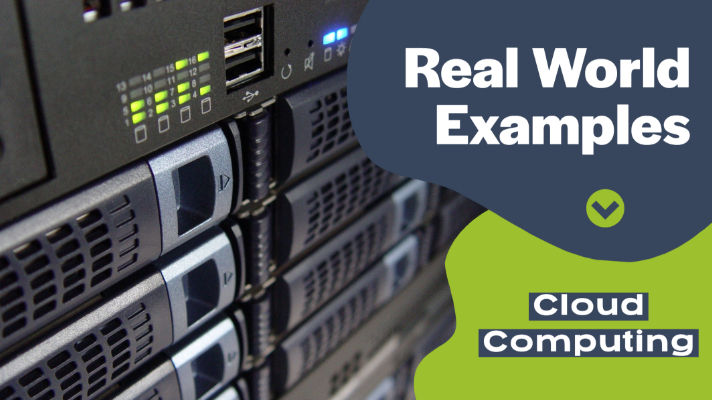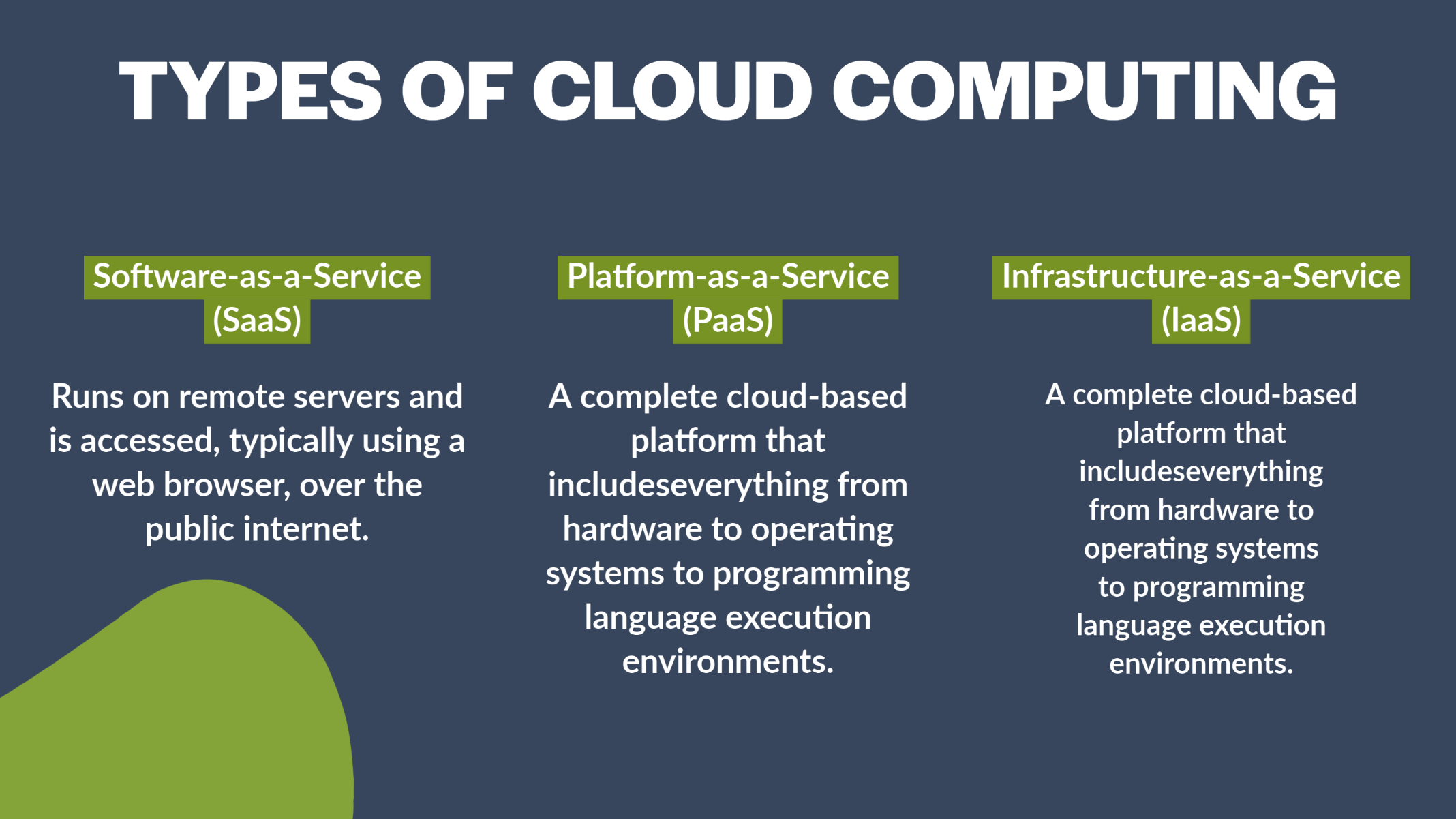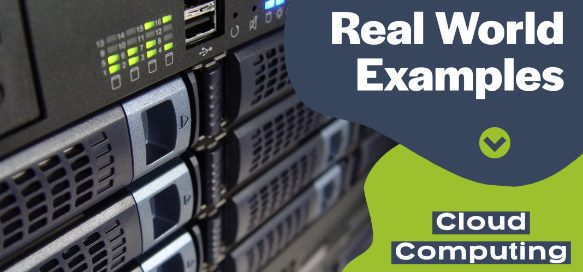
Cloud computing is not just a buzzword anymore. It’s one of the fastest-growing industries in the world, expected to grow from $371.4 billion in 2020 to $832.1 billion by 2025. Examples of cloud computing can be found all around us because they make up the foundation of many organizations’ IT infrastructures.
What Is Cloud Computing?
Amazon, the leader in public cloud computing, defines cloud computing as “the on-demand delivery of IT resources over the internet with pay-as-you-go pricing.”
Microsoft, another top provider of cloud services, uses a similar definition, saying that “cloud computing is the delivery of computing services—including servers, storage, databases, networking, software, analytics, and intelligence—over the internet.”
Instead of having to purchase, set up, and maintain an expensive in-house IT infrastructure, end-users (organizations and individual users alike) can simply pick the services that best meet their needs and enjoy them from any place with access to the internet.
Examples of Cloud Computing
Cloud computing services are typically grouped into three broad categories: software as a service (SaaS), platform as a service (PaaS), and infrastructure as a service (IaaS). Let’s take a closer look at them and some of their best-known examples.

Software-as-a-Service (SaaS)
SaaS is the most widely recognized cloud computing category because it encompasses the various software solutions end-users interact with on a daily basis.
Instead of being installed locally on individual computers, SaaS software runs on remote servers and is accessed, typically using a web browser, over the public internet.
The biggest advantage of this model is that end-users and administrators don’t have to worry about software maintenance. SaaS providers take care of patching, security, scaling, and all other aspects of keeping their software running as intended.
Real-world example: Microsoft 365
When it comes to enterprise-oriented SaaS, Microsoft 365 is arguably the best example because most organizations these days rely on it to some extent.
Microsoft 365 is actually an entire family of cloud-based applications, and it includes web and mobile versions of Office apps (Word, Excel, PowerPoint, and OneNote), email and calendaring (Outlook), file storage and sharing (OneDrive), teamwork and communication (Microsoft Teams), and more.
Platform-as-a-Service (PaaS)
For a single monthly fee, PaaS users can use the platform of their choice to build, test, deploy, maintain, update, and scale innovative applications and services without having to worry about the maintenance of all the supporting hardware and software.
With PaaS, organizations can get their products to market faster, all while keeping their infrastructure costs down.
Real-world example: AWS Elastic Beanstalk
AWS Elastic Beanstalk is a service for deploying and scaling web applications and services developed with Java, .NET, PHP, and other languages on familiar servers, such as Apache, Nginx, Passenger, and IIS. Users can simply upload their code, and Elastic Beanstalk automatically handles the entire deployment process, from capacity provisioning to application health monitoring.
Infrastructure-as-a-Service (IaaS)
IaaS offers essential compute, storage, and networking resources, allowing you to create your own cloud-based IT infrastructure while avoiding the cost and complexity of buying and managing physical servers.
IaaS providers are responsible for the management and security of the actual physical machines that they offer to customers in a virtualized form on-demand, over the internet, and on a pay-as-you-go basis.
Popular IaaS providers have data centers in multiple geographical locations, so they’re able to ensure uninterrupted availability even during major natural disasters and other unpredictable events.
Real-world example: DigitalOcean
DigitalOcean is an American IaaS provider that offers on-demand delivery of computing resources over the internet. With DigitalOcean, it’s possible to spin a virtual server (called Droplet) in less than a minute. Users get to choose from a number of available operating systems, and they can customize available hardware resources to precisely meet their needs.
As an IaaS provider, DigitalOcean is responsible for low-level infrastructure management, such as security, data partitioning, and backups, and users themselves have to take care of the software side of things.
Conclusion
Cloud computing is changing how organizations large and small operate, giving them cost-effective access to scalable and secure IT resources and computing services, from individual software applications to barebones hardware. In this article, we described the main cloud computing categories and provided several real-world examples of cloud computing to illustrate its wide range of potential applications. If you need more information about BCA’s cloud computing services, feel free to contact us.

